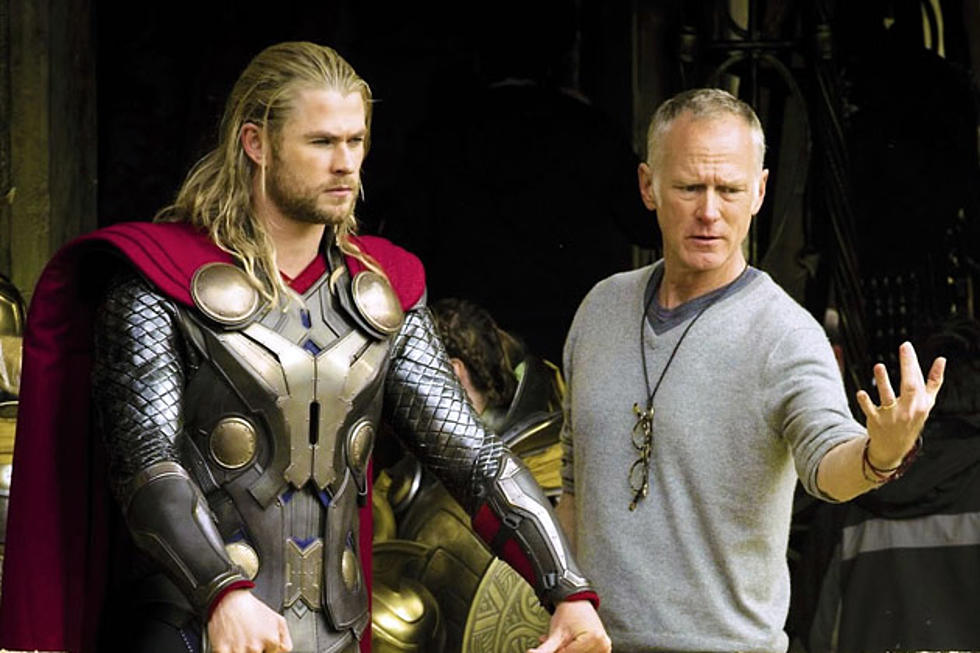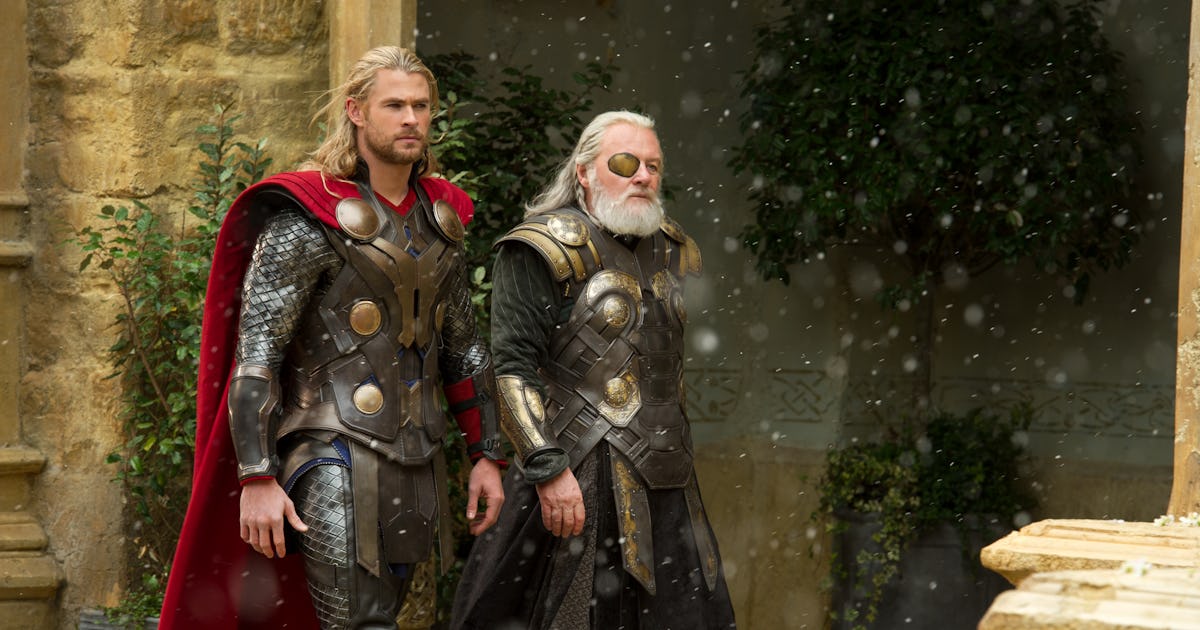update On Aug 13, 12:58 pm ist

Director Alan Taylor candidly discusses making ‘Thor 2’ and ‘Terminator: Genisys’ back to back, and how his unseen “Taylor Cut” version of the Marvel sequel was very different

As part of a deep-dive interview with The Hollywood Reporter about his career and the making the new The Sopranos prequel movie The Many Saints of Newark, Emmy-winning director Alan Taylor got candid about the toughest period during his decades of filmmaking: Directing two major franchise pictures, Thor: The Dark World and Terminator: Genisys, back to back.
After helming dozens of acclaimed episodes of prestige TV shows ranging from Mad Men to The Sopranos to Game of Thrones, Marvel offered Taylor the 2013 Thor sequel. The film was subtitled The Dark World, which hinted at the film’s original tonal intention — something darker and more grounded than director Kenneth Branagh’s debut entry
“[Marvel president] Kevin Feige was always smart about looking at what worked and didn’t in the last iteration and trying to retool from that,” Taylor tells THR. “So I came in to ‘bring some Game of Thrones to it.’”

The Dark World is considered one of the MCU’s weakest entries, even if it was a box office success (drawing $644 million). Some known factors in its creative troubles included a tight production deadline and a script that was seemingly never finished. Wonder Woman director Patty Jenkins was initially attached to the project but wisely bowed out. “I did not believe that I could make a good movie out of the script that they were planning on doing,” Jenkins said in 2020. “It would have looked like it was my fault.”
Instead, it looked like Taylor’s fault, and the director watched as the film changed radically during postproduction editing and reshoots.

“The version I had started off with had more childlike wonder; there was this imagery of children, which started the whole thing,” he says of the unseen “Taylor Cut.” “There was a slightly more magical quality. There was weird stuff going on back on Earth because of the convergence that allowed for some of these magical realism things. And there were major plot differences that were inverted in the cutting room and with additional photography — people [such as Loki] who had died were not dead, people who had broken up were back together again. I think I would like my version.”
Taylor modestly suggested certain writer-directors (he is typically a director and producer) might have been able to turn around the beleaguered project. “I really admire the skill set of somebody who can go in with a very personal vision — like [Thor 3 director] Taika Waititi or James Gunn — and manage to combine it with the big corporate demands,” he says. “I think my skill set may be different.”
“[Marvel president] Kevin Feige was always smart about looking at what worked and didn’t in the last iteration and trying to retool from that,” Taylor tells THR. “So I came in to ‘bring some Game of Thrones to it.’”
The Dark World is considered one of the MCU’s weakest entries, even if it was a box office success (drawing $644 million). Some known factors in its creative troubles included a tight production deadline and a script that was seemingly never finished. Wonder Woman director Patty Jenkins was initially attached to the project but wisely bowed out. “I did not believe that I could make a good movie out of the script that they were planning on doing,” Jenkins said in 2020. “It would have looked like it was my fault.”
Instead, it looked like Taylor’s fault, and the director watched as the film changed radically during postproduction editing and reshoots.
“The version I had started off with had more childlike wonder; there was this imagery of children, which started the whole thing,” he says of the unseen “Taylor Cut.” “There was a slightly more magical quality. There was weird stuff going on back on Earth because of the convergence that allowed for some of these magical realism things. And there were major plot differences that were inverted in the cutting room and with additional photography — people [such as Loki] who had died were not dead, people who had broken up were back together again. I think I would like my version.”
Taylor modestly suggested certain writer-directors (he is typically a director and producer) might have been able to turn around the beleaguered project. “I really admire the skill set of somebody who can go in with a very personal vision — like [Thor 3 director] Taika Waititi or James Gunn — and manage to combine it with the big corporate demands,” he says. “I think my skill set may be different.”
A few months before The Dark World was released, Taylor received an offer to direct another massive franchise picture and, once again, it seemed like a no-brainer: Terminator: Genisys. His girlfriend, Jane Wu, a storyboard artist he met while working on The Dark World, urged him to turn it down.
“Well, she read the script,” Taylor explains with a laugh. “She said, ‘You should be doing something you love right now, something that’s more personal.’”
But the prospect of working with star Arnold Schwarzenegger, who impressed him during their meetings, and the chance to build on the legacy of James Cameron’s acclaimed Terminator films was too tempting. “All the voices in my head, and all the ones around me, were saying I should do it because who didn’t love the first two films?” he says. “I thought we would go in and fix the script and everything could be great.”
Once again, the film was profitable, grossing $440 million globally (in fact, only the beloved Terminator 2 earned more than Genisys in the franchise). The critic and fandom mobs, however, were brutal, and their impact on Taylor was profound.
“I had lost the will to make movies,” Taylor says. “I lost the will to live as a director. I’m not blaming any person for that. The process was not good for me. So I came out of it having to rediscover the joy of filmmaking.”
See THR‘s full profile of Taylor for how he pulled out of his spiral, some new behind-the-scenes details of the making of The Sopranos prequel movie, and some insight into Taylor’s work on several iconic TV episodes.
A few months before The Dark World was released, Taylor received an offer to direct another massive franchise picture and, once again, it seemed like a no-brainer: Terminator: Genisys. His girlfriend, Jane Wu, a storyboard artist he met while working on The Dark World, urged him to turn it down.
“Well, she read the script,” Taylor explains with a laugh. “She said, ‘You should be doing something you love right now, something that’s more personal.’”
But the prospect of working with star Arnold Schwarzenegger, who impressed him during their meetings, and the chance to build on the legacy of James Cameron’s acclaimed Terminator films was too tempting. “All the voices in my head, and all the ones around me, were saying I should do it because who didn’t love the first two films?” he says. “I thought we would go in and fix the script and everything could be great.”
Once again, the film was profitable, grossing $440 million globally (in fact, only the beloved Terminator 2 earned more than Genisys in the franchise). The critic and fandom mobs, however, were brutal, and their impact on Taylor was profound.
“I had lost the will to make movies,” Taylor says. “I lost the will to live as a director. I’m not blaming any person for that. The process was not good for me. So I came out of it having to rediscover the joy of filmmaking.”
See THR‘s full profile of Taylor for how he pulled out of his spiral, some new behind-the-scenes details of the making of The Sopranos prequel movie, and some insight into Taylor’s work on several iconic TV episodes.